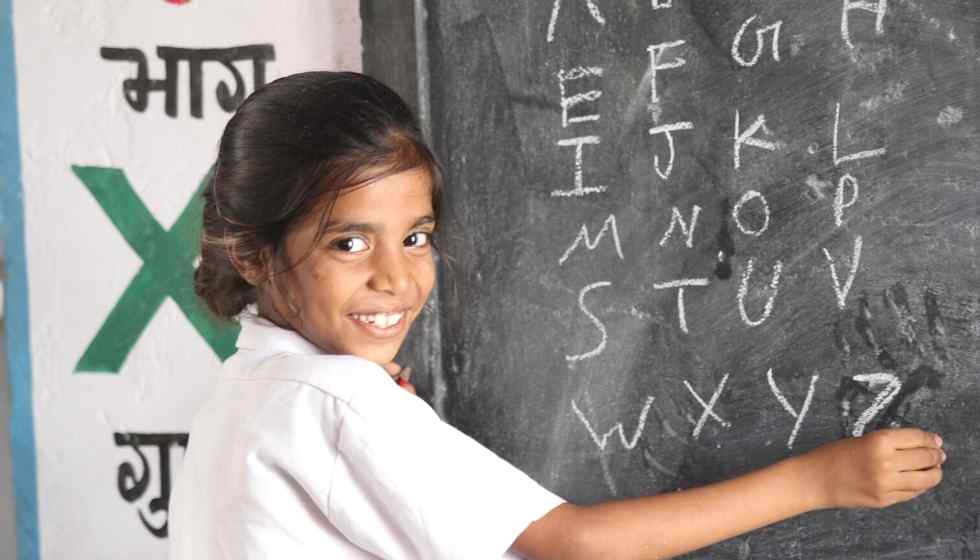India, a country in the Asian continent, ranks second in the list of countries by population. This great nation is home to nearly one-fifth of the total world’s population.
It is a country that is diverse in terms of ethnicities, cultures, and traditions. A former colony of Great Britain, this country gained its independence on the 15th of August 1947.
It is a country with a high population of young people and, by extension, students: over 670 universities and 38,000 colleges.
The country boasts of over 800,000 professors and teachers. However, this data does not paint the complete picture of Education in this country. Before we proceed, let us examine primary and higher education.
Primary Education
In India, there are two levels of primary Education; the lower primary and upper primary. The lower primary has five standards. It commences when a child reaches the age of 6 and should end at age 10. The upper primary has two measures. It begins at age 11 and ends at age 12.
Here, children learn the basics, read and write, and communicate with other people effectively. They also learn thought processes, imagination, and some basic skills.
Primary Education is an integral part of learning that prepares young kids through the entire process.
Kids need all the nurturing they can get at a tender age to help them develop healthy learning habits. Unfortunately, many children do not go through quality primary education in India, which distorts their ability to learn in the long term.
Higher Education
Like primary Education, Higher Education also comes in two divisions, high school and higher secondary. The high school has three divisions. It commences at 13 and ends at 15.
The higher secondary, unlike the high school, has two divisions. It starts at age 17 and ends at 18. This level of Education helps improve the student’s communication skills. The student also learns some subjects that would help shape their decisions regarding their future course of study.
The school system in India is suboptimal and fraught with plenty of problems. These problems interfere directly and indirectly with child learning. They could hamper or completely disrupt the learning process.
What Are These Problems?
Quality of teaching
The quality of teaching in Indian schools is in a steady decline. This is a result of the weekly training given to the teachers. Some colleges employ the services of fresh graduates, and this further reduces the quality of Education. These new graduates are inexperienced and might not be able to transfer knowledge appropriately.
A lot of people are not interested in the teaching profession due to the inadequate compensation for teachers. Thus, there is little or no motivation to go into the teaching profession. Hence, poor quality of teachers who are not happy about their jobs.
Thus, low-quality teachers with little or no training are responsible for poor-quality education in India.
Government financing
The government claims to be doing its best as regards funds in the educational sector. But is she best enough? If the quality of Education would improve nationwide, then the government has to do more. True, there are other sectors of the country to finance, but for a country to have a future, its future leaders need proper training.
Educational funding in India is inadequate compared to the population of the country. India is heavily populated and needs heavy funding from the government to enjoy quality education.
Sadly, the sector lacks financing and cannot meet the standard of funding required to push it to the quality of education globally.
Allocation system
This system involves getting admitted into a school because of your identity instead of merit and talent. Here, students are admitted based on their points of origin. The downside of this system is the admission of students which might delay the development of their colleagues.
Low-quality educational institutes
There are many low-quality educational institutes scattered all over the country, which deters students’ academic development. These institutes lack quality teachers and hence produce under-baked students.
Due to the lack of funding in the educational sector, the country has many low-quality educational institutes, which affects the general quality of Education in the country. These institutes cannot afford to pay teachers and obtain educational materials and equipment. Hence, this dramatically affects the available quality of Education in the country.
Inadequate infrastructure and facilities
Research is the basis of Education, and without it, Education is dead. In India, only the highly recognized institutes of learning have the amenities needed to train their students. Many institutes function without the necessary infrastructure. They lack infrastructures like hostels, laboratories, classrooms, transportation, and sports facilities which every quality institution needs.
The Way Forward
The quality of education in India is not only inadequate but has no remedy in sight.
Due to the current pandemic ravaging the country, it’s even harder to channel the right amount of finances to its educational section. Thus, the a need for a complete revaluation of the country’s educational sector.
The government of India needs to do more to address the issues ravaging the country’s educational sector. Due to the critical educational system, the country is currently suffering from massive unemployment. This leads to increased crime, a high poverty rate, and other ills in the country.
According to Joan Young, a professional paper writer at AdvancedWriters.com, when the government does not invest in Education, it supports chaos. The Indian government needs to do better to help its citizens’ development by creating a working educational sector. Improved funding will go a long way to improve the quality of life in the country and reduce the growing crime and poverty rate.
India has massive human resources that can turn the fortunes of the country for good. However, the lack of quality education limits the potential of the country and hampers its growth rate.
Are you in search of highly qualified academic writers for your essay or research paper? Check out paper writing services and work with professionals trained on how to handle all kinds of writing needs.




